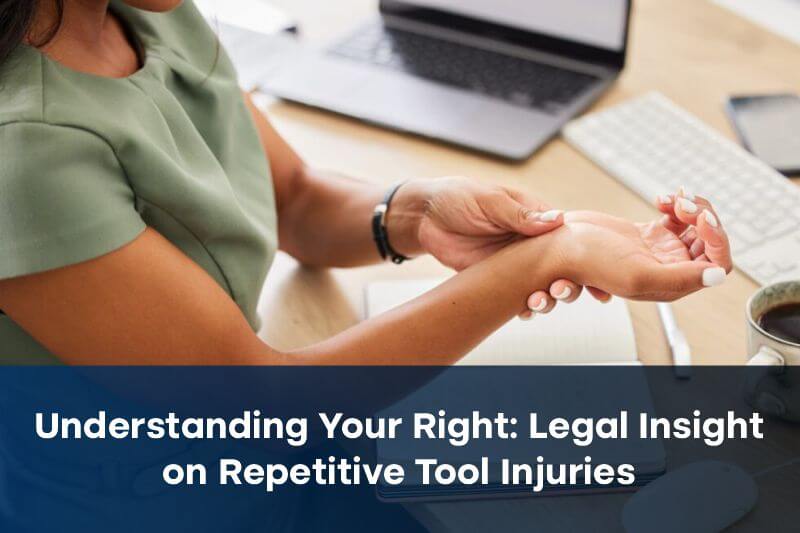Repetitive tool injuries are serious occupational conditions experienced by workers routinely using vibrating tools or repeating the same hand movements. Vibration white finger compensation claims are typical injuries in this category, as it is now recognised as an industrial disease in UK law. These injuries can have profound effects both physically and financially.
Understanding your legal status and how to file industrial disease claims with experienced vibration white finger solicitors is crucial. This guide will cover your rights, the duties of employers, the claim process and how to get the compensation you rightfully deserve as a result of these serious and life-changing injuries.
What are Repetitive Tool Injuries?
Repetitive tool injuries are the consequence of a worker’s prolonged use of work tools – electric drills, screwdrivers, hammers, grinders, sanders, power saws, etc. Any of the tools has the potential to induce an enormous amount of force on the human body, which can lead to various injuries or disorders related to the musculoskeletal and nerve systems. Such injuries or disorders may include:
- Trigger Finger: When a finger locks or catches from repeated gripping.
- Hand-Arm Vibration Syndrome: Symptoms of tingling, numbness, and weakness in the hand and arm regions.
- Epicondylitis (Tennis or Golfer’s Elbow): Swelling and pain. It usually occurs after repeated twisting or lifting motions.
- Rotator Cuff Related Injuries: Injury of the shoulder from repeated use of hand tools at or above shoulder height.
The victims of HAVS and other vibration-related injuries may seek vibration white finger compensation as part of a specific claims process for known industrial diseases
Employers’ Legal Duties to Prevent Injury
In the UK, health and safety legislation, including the Control of Vibration at Work Regulations 2005 and the Health and Safety at Work Act 1974, specifically requires UK employers to protect employees from injuries and work-related industrial diseases caused by using repetitive tools. Employers should:
- Regularly check the amount and frequency of repeated tool use.
- Provide anti-vibration gloves or other ergonomic supports.
- Train workers about the safe use of tools or practices.
Your Right to Compensation: Navigating the Claims Process
Understanding the industrial disease claims process, whether it is vibration white finger or another repetitive tool injury, involves some careful steps, detailed evidence, and often the assistance of vibration white finger solicitors. Here’s how it usually works with this type of industrial disease claim:
Step 1: Seek Medical Evidence
Your first step is to get a diagnosis from a doctor and make sure your medical records connect your repetitive tool condition to work. This is critical as it demonstrates the cause of your symptoms and your case to receive vibration white finger compensation or other industrial disease claims.
Step 2: Gather Supporting Evidence
To assist your compensation claim, you must collect:
- Employment history.
- Training details and safety measures.
- Any accident reports, health and safety evaluations.
- Witness statements from colleagues.
- The records of the financial losses.
Step 3: Instruct Specialist Solicitors
Engaging vibration white finger solicitors or people who have expertise in industrial disease claims can be very important. They will:
- Assess your eligibility and the level of your claim.
- Obtain independent medical assessments and other evidence.
- Prepare and submit your claim to your employer and seek an early admission of liability.
- Carry out negotiations on your behalf and aim to avoid you having to go to court unless necessary.
- Explore interim payments to help you cover your urgent financial needs while the claim is pending.
Step 4: Be Aware of Time Limits
Generally, you must submit your industrial disease claims within three years of either your diagnosis or when you first reasonably connected your injury to your employment. There are sometimes exceptions to this, and for instance, working with a minor or claims of family members of the deceased worker. To make a claim, there is a deadline for making a claim and you may lose the right to claim an injury if you do not make a claim in the right amount of time.
Step 5: Understand Possible Outcomes
If your industrial disease claims are successful, you’ll be compensated for:
- Damages for pain, suffering, and the daily effects of your injury.
- Special damages for your lost earnings, medical expenses, rehabilitation, and all associated expenses;
- Interim payments may assist in covering loss of income or urgent costs while awaiting a finalised settlement.
If your employer or their insurer disputes your claim or makes no admission of liability, your solicitors will be ready to present your case in front of a court.
Conclusion
Vibration white finger or other repetitive tool injury could have a serious impact on your life and well-being. Knowing your legal rights and making industrial disease claims will help you gain the compensation you deserve. With professional assistance from Jiva Solicitors, the process is manageable, and they’ll help you obtain the justice and compensation you rightly deserve as a result of health problems that occurred because of negligence by your workplace.
Begin your claim now and contact Jiva Solicitors to arrange a free, no obligation consultation and expert assistance.



